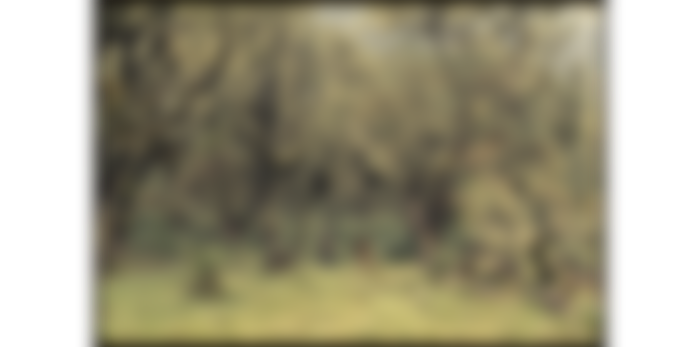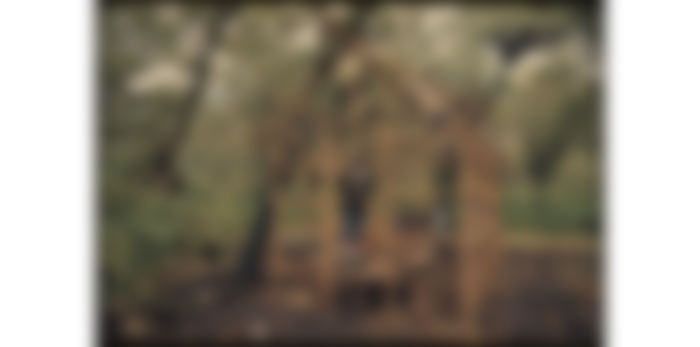
A woman who lives alone on a mountain ", is the name given to the local population of Rwanda by Diane Foss. And they are not the only ones to whom she was unusual. In her native San Francisco, most considered the idea of living in the wild, among gorillas, insane. Although today he is considered to be the greatest connoisseur of gorillas, at the very beginning, the scientific community also resisted the decision of its mentor, anthropologist Luis Liki, to research primates by people without proper formal education. Readers of her book Gorilla in the Mist, or viewers of the film of the same name, can describe her as incredibly brave, her collaborators probably as stubborn, and poachers against whom she waged war as dangerous. However, all its characteristics have contributed to the fact that mountain gorillas are today the only species of great apes whose population is growing. There are currently about 1000 individuals.

Although she loved animals since childhood and wanted to be a veterinarian, her mother, a model, and her stepfather, a businessman, wanted her to attend one of the business schools. She did not receive understanding and support from them, or even the money to enroll in the faculty she wanted, so she started doing various jobs. At the time she first went to Africa, she was working as a therapist at a children's hospital. The married couple Henry also worked with her, on whose farm she often stayed and from whom she borrowed money for the safari she went to in 1963. The two most important moments on this trip are meeting the gorillas in Congo and visiting Luis and Mary Leakey while they were doing research in the Olduvaj gorge. Upon returning home, all of this continues to pique her interests, and three years later she was given the opportunity to meet Lycia again, this time at a lecture he gave in Kentucky. She told him about her interest in gorillas, and he offered her to start one big research. Lifelong, as it turns out.
She became one of the women of the so-called Trimata, or one of the three "angels of Lycia". Besides her, there are Jane Godal who studies chimpanzees and Birute Galdikas who deals with orangutans. They were all hired as amateurs, which was controversial in scientific circles at the time, but Leakey has long been looking for people who are ready to completely change their lifestyle and dedicate themselves to the constant observation of primates. What these three women saw with their own eyes is hardly comparable to the experience of reading books in academic circles, and has made them the greatest authorities in their fields.
Thanks to the experience she had, distrustful of everyone, Diane Fossie thought that international organizations could not do much to protect gorillas, much less the National Park Service, which itself is involved in poaching.

Fossi talks to Congolese soldiers, PHOTO: Bob Campbell, University of Florida Digital Collections

Her hut, PHOTO: Bob Campbell, University of Florida Digital Collections
Mountain gorillas were first recognized and described as a species in 1902, and Louis Leakey feared that they could become extinct in the same century. So he was looking for a person to do a lot of research. Before Diane Fossie, only one person studied these animals in the wild - American zoologist George Schaller, who began research in 1959 in Congo, but it lasted only 20 months. Diane Fossie will study these primates for 18 years.
She first came to the same place where her predecessor started working, but due to the unstable political situation in Congo, she went to Rwanda and founded the Carisoke Research Center there in 1967. Namely, mountain gorillas inhabit the mountain range of Virunga, which stretches along the borders of Rwanda, Uganda and the Democratic Republic of Congo. While the gorillas from Congo already had experience with one researcher, the only people those from Rwanda saw were poachers. That is why it was not an easy task for Diane Fossie to get closer to them.

However, it was even harder to defend them. Hunting was banned in Virunga National Park, but that formality had no real significance. The park staff was corrupt, as were the local population living in poverty, so there was no way to prevent the hunt. Diane Fossie often witnessed the cubs being caught to be taken to European zoos, and the parents fought to the death to protect them. Traders ordered gorillas' heads to be cut off and then sold as trophies, and severed fists as ashtrays. Diana's favorite gorilla, Digit, was also killed, so after that event, she set up a fund under his name to raise money for patrols to fight poaching.
Thanks to the experience she had, distrustful of everyone, Diane Fossie thought that international organizations could not do much to protect gorillas, much less the National Park Service, which itself participates in poaching. That is why she herself, with her patrol, destroyed the traps. It was noted that her four-member team destroyed 987 traps in just four months, while the National Park staff did not destroy any in the same period.
She waged a real war with poachers. Some would describe it as cruel, and some as perhaps the only possible one


Log cabin construction, PHOTO: Bob Campbell, University of Florida Digital Collections
She criticized international conservation organizations at the expense of the tourist programs they organized. In addition to believing that tourists disrupt the life of gorillas and her research work, she warned that gorillas are susceptible to human diseases. However, in the complex living conditions imposed by gorillas, it is not so easy to determine what is right, so today the Diane Fossie Gorilla Fund (formerly the Digit Fund) still advocates tourism as a way for the local community to dedicate itself to gorillas and their habitat.
In addition to poaching and disease, the challenge for mountain gorillas is the loss of habitat due to the expansion of settlements and forest fragmentation, which leads to the isolation of groups and a reduction in genetic diversity. Both wars and political instability are a constant threat. After the death of Diane Fossie, the Carisoke Research Center continued its work, but it was closed during the genocide in Rwanda and the civil war, it was destroyed and then rebuilt, it was moved. In such conditions, the researchers working in it still managed to improve the status of mountain gorillas. In the past decade, population growth has been recorded, so in 2008 this species was marked as critically endangered on the Red List, and since 2018 it has been endangered, which is still a slightly better status. Compared to today's thousand individuals, thirty years ago there were only 250 mountain gorillas.


FOTO: Bob Kembel, University of Florida Digital Collections

Diane Fossie described them as "elegant, sociable and gentle giants". She often achieved greater understanding with them than with people, always allowing them to be what they are by nature and trying not to disturb it with her observations. On the other hand, she was in conflict with people. Her temperament and ways of fighting were sometimes incomprehensible to her closest associates. She waged a real war with poachers. Some would describe it as cruel, and some as perhaps the only possible one. She intimidated the surrounding villages, and some allege that she would kidnap poachers, keep them as prisoners, interrogate them, beat them. Perhaps the most interesting description of her personality was given by her associates: "She was like a gorilla, she can scare you, and she can be gentle and full of love."
In the early morning of December 27, 1985, Diane Fossie was found dead in her camp room. She was brutally killed, and all around her there was broken glass and overturned furniture. Nothing was stolen and the motive was not robbery. The murder has not been solved to this day. The assumptions are numerous, and the most convincing seems to many that the motive was her fight against poaching. She was buried near Didigit, in a kind of cemetery she made for gorillas, and on her monument it is written: "Nobody liked gorillas more than her".










I am delighted with how many good, noble and brave people there are in the world!